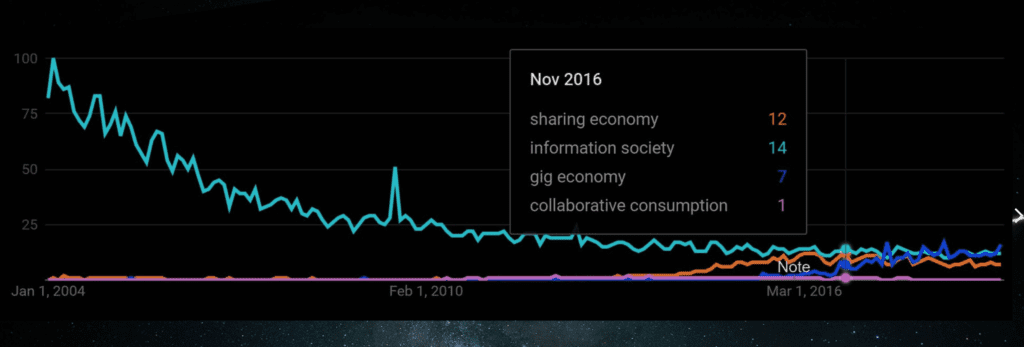We live in an age of technological disruption where sharing economy firms like Uber, Airbnb, and WeWork are trying to transform our everyday services and commodities like transportation, lodging, and working spaces. Uber is an example of a technology-based application moving into a sector of the economy and changing the established process of how people get around a city. Wikipedia is another disruptive service that is upending the traditional knowledge hierarchy of controlled information dissemination from institutions such as universities and libraries. In the global south, where many do not have access to a library or university but may have access to an internet-connected phone, Wikipedia is often the largest and most accessible source of information. The six million articles plus twenty-nine million discussion and talk pages on the English Wikipedia, in addition to the Wikipedias for other languages, put a wealth of information and knowledge at our fingertips.
In his February 19th talk “Collaborative Society: How Technology Amplifies on Natural Cooperative Tendencies,” Dariusz Jemielniak argued that it is conflict that makes mass collaboration possible and productive, as can be seen on Wikipedia. His talk is based on his new book Collaborative Society that discusses “how networked technology enables the emergence of a new collaborative society.” Professor Jemielniak asserts that we are applying the term “sharing economy” so broadly that it is losing its meaning; this framing also obscures the non-monetary aspects of online collaborative interactions. Therefore, he divides mass collaboration into a typology with two dimensions: profit-oriented platforms v. non-profit platforms, and profit-oriented users v. non-profit users. Profit-oriented platforms with profit-oriented users are the sharing economy services we think of like Uber or TaskRabbit. Non-profit platforms with profit-oriented users are online cooperatives like timebanks or peer-to-peer lending services. Profit-seeking platforms with non-profit users are crowdsourcing services like Yelp or TripAdvisor. Finally, non-profit platforms with non-profit users are peer production services like Wikipedia and online activism networks. These four categories better describe the different ways that people are collaborating online and the patterns of interaction in the so-called “sharing” economy.

Wikipedia effectively works toward creating a credible information source, argues Professor Jemielniak, because its members are in conflict about epistemological questions. Conflict is important to Wikipedia because conflict provides a motivation to participate that channels engagement through consensus and codified rules. Furthermore, the non-hierarchical, horizontal organization of Wikipedia treats “dissent as a form of discussion.” Indeed, the best Wikipedia pages are those that have been produced with the most conflict because conflict forces people to discuss disagreements and find sources to support claims and statements. Simultaneously, the “worst” Wikipedia pages are those that are non-controversial where there is little to no conflict and the topic is not rigorously researched or cited. While conflict drives Wikipedia users to create the best-sourced pages, there are negative side effects. For example, conflict has been driving groups of users out of the discussion, and now only a small fraction of actively editing Wikipedia users are women. Wikipedia has done much to provide free information to the world, but for it to be truly collaborative, the conflict that drives its success cannot also push people out. To be more inclusive, Wikipedia is instituting a series of reforms to boost the number of women creating and editing articles while asking contributors to be respectful and welcoming.



